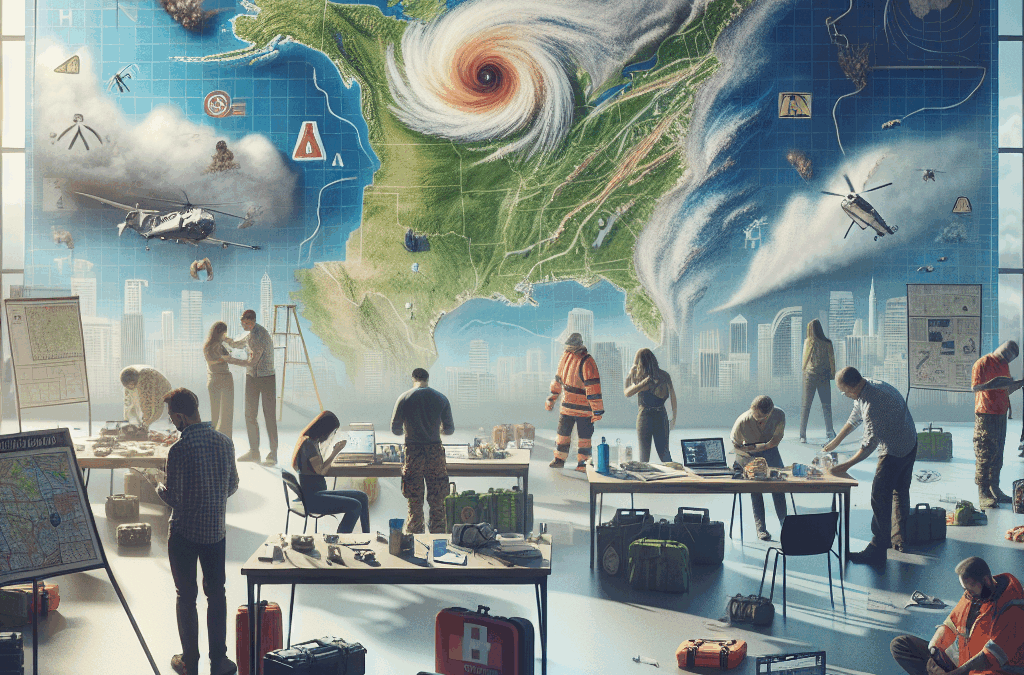In a world where natural calamities and unforeseen events loom large, taking proactive measures is essential. The truth is, disasters can strike without warning. From hurricanes to wildfires, earthquakes to pandemics, understanding the risks associated with your specific location is the first step toward safeguarding your family and property.
## Understanding the Risks: Identifying Potential Disasters
Start by assessing the types of disasters that are most likely to affect your area. Is it prone to flooding or tornadoes? Are earthquakes a frequent concern? Conduct thorough research through local government websites or community bulletins to identify prevalent hazards. By knowing what you may face, you can tailor your preparedness approach more effectively.
## Building Your Disaster Plan: Essential Steps for Every Household
Once you’ve identified potential risks, it’s time to create a disaster plan tailored specifically to your household’s needs. Discuss it with all family members—everyone should know how to respond in an emergency. Designate meeting points both inside and outside your home where everyone can gather if separated during an evacuation. Additionally, establish communication methods; consider how you’ll connect if cell service is disrupted.
## Stocking Up: Creating Your Emergency Supply Kit
A well-stocked emergency supply kit can be a lifesaver when disaster strikes. Start with the basics: water (one gallon per person per day), non-perishable food items, first aid supplies, flashlights, batteries, and personal hygiene products. Don’t forget about unique requirements like medications or pet supplies! Tailor kits for each family member’s needs and keep them in easily accessible locations. Regularly update these kits every six months—check expiration dates on food and replace any used items.
## Staying Informed: Utilizing Technology and Community Resources
In today’s digital age, staying informed has never been easier—or more critical. Leverage technology such as weather apps that send real-time alerts about impending threats. Social media platforms also provide vital updates from local authorities during emergencies. Beyond personal resources, engage with community organizations focused on disaster preparedness; they often offer workshops or training sessions that empower citizens with knowledge and skills.
## Training and Drills: Preparing Your Family and Community
Preparation doesn’t stop at creating plans—it involves practice too! Conduct regular drills within your household so everyone knows what to do when a crisis occurs. This not only instills confidence but also helps identify areas needing improvement in your plan. Consider organizing neighborhood gatherings or workshops aimed at community readiness; fostering connections among residents enhances collective resilience.
Thank you for reading this post, don't forget to subscribe NOW for FREE!
## Recovery and Resilience: Post-Disaster Action Steps
Even after a disaster has passed, recovery remains crucial for long-term resilience. Assess damage immediately while ensuring safety comes first—never enter unstable structures without professional guidance! Document everything for insurance purposes; photographs prove invaluable in claims processes. Stay connected with local resources offering assistance like temporary shelters or financial aid programs designed for recovery efforts.
Ultimately, being prepared means living with a sense of purpose rather than fear—embracing proactivity leads us down the path of resilience against life’s uncertainties. By understanding risks, building solid plans, stocking essentials wisely, leveraging technology effectively, practicing regularly—and preparing for recovery—we not only protect ourselves but empower our communities as well. Don’t wait until it’s too late; take these steps now!
Related Content
- Be Ready for Anything: Your Ultimate Guide to Emergency Preparedness
- Bracing for the Storm: 5 Early Warnings of an Impending Pandemic
- The Importance of Keeping an Emergency Contact List
- What do I do if my emergency supplies run out?
- Preparing Your Business for Natural Disasters: A Comprehensive Checklist






